Churches in Bautzen
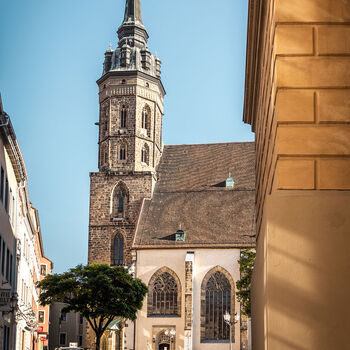
St. Peter Cathedral
Fleischmarkt
The St. Peter Cathedral has been shared by Catholic and Protestant Christians since 1524. It is the oldest and largest bi-denominational church in Germany. The domicile agreements concluded in the course of the Reformation are still valid today and regulate among other things property rights and worship times between the church communities.
The first parish church was built circa 1000 AD. In 1213/21 the founding of the St. Peter Cathedral and the original cathedral construction took place. After 1430 the cathedral took on its present form. In 1456/63, the fourth, southern nave was erected and the late Gothic building was completed in 1492/97.
After the damage caused by the city fire of 1634 the building was restored and the interior was designed in Baroque style. Of the two planned towers, only the southern tower was built and in 1664 a baroque roof was added. Restorations were carried out in the years 1882/85, 1950/53 and 1987. After the external restoration of the cathedral was completed in September 2007, the interior renovation was finished in November 2015. Inside, there are two imposing organs, which are responsible for magnificent musical tones: in the Protestant part, the Opus 119 organ of the Bautzen company “Organ Building Hermann Eule” from the year 1910, in the Catholic part the somewhat smaller instrument of the Bautzen tradition workshop of Leopold Kohl.
1921 the St Peter Cathedral became the Cathedral of the Meißen diocese, and since 1980 it has been the co-Cathedral of the bishopric Dresden-Meissen.
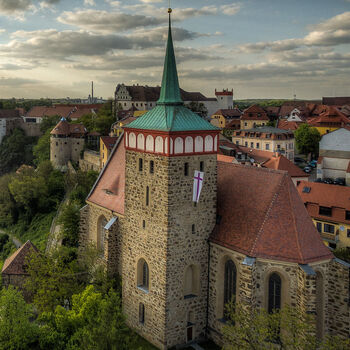
St. Michael Church
Wendish Cemetery
The late-Gothic church was erected in 1450 and has been serving the Protestant, German and Sorbian villages around Bautzen since 1619. The church was comprehensively renovated between 2005 and 2007.
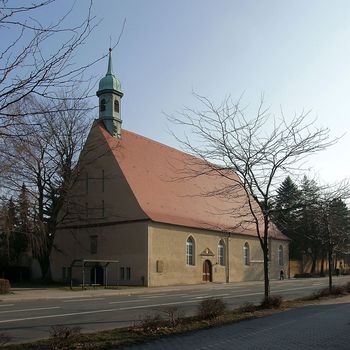
Taucherkirche
Löbauer Straße
In the year 1553, the Marienkapelle was moved from the city’s Taucherwald near Uhyst to the present location of the Taucherkirche in Bautzen. In the years 1598/99 it had to be rebuilt following severe storm damage. Between 1620 and 1639, a new reconstruction of the building was necessary, including the construction of the present steep-sided roof structure with the small tower and spire.
From 1778 to 1859, the church was repeatedly damaged and rebuilt several times, and in 1899 the hospital, which adjoined the church, was demolished. After 1917, a fundamental rebuilding of the church took place. In 1954 the Kohl organ was overhauled and the church interior was renovated. Today, the Taucherkirche serves for church services, especially for funeral services. Since 1997 it has also been used as a venue for concerts. These usually take place in the concert season on the second Sunday of the month from March/April to November.
In 1997, the “Taucherkirche” Foundation was set up, which has been successful in preserving the more than 400-year-old church. The foundation is still dependent on donations from the public.
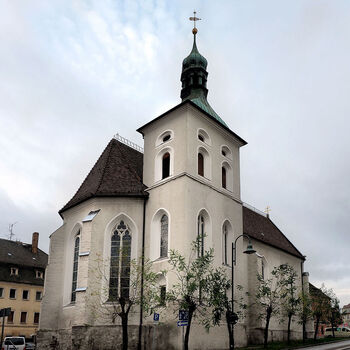
The Church of “Our Lady”
Church Square
The church of “Our Lady”, also called “The Sorbian Church”, originally stood in front of the city walls and was destroyed several times in the course of its centuries-long history. The interior has had its present appearance since the renovation in 1998.
The church was first mentioned in 1293 as a church “to Our Lady” on the Salzmarkt, today’s Church Square. From 1318 to 1865 there was a cemetery here. In 1431 it was destroyed by the Hussites and then rebuilt in 1443. In 1620, 1634 and 1686, the church was destroyed again by wars and fires, and was rebuilt in 1690 with a stone hall. Since 1647, it has served as a replacement parish church for the Nicolaikirche (St Nicholas Church), which was destroyed in 1634. It drew its congregation from the inhabitants of the outlying parts of Bautzen and the Catholic Sorbs of the surrounding villages. In 1848 the church was comprehensively renovated. From 1864 to 1900 it took on essentially its present form. Further restorations were carried out in 1897, 1936, 1972/73 and in 1998. Today, it is a branch church of the Roman-Catholic community of St. Peter (Sorbian church).
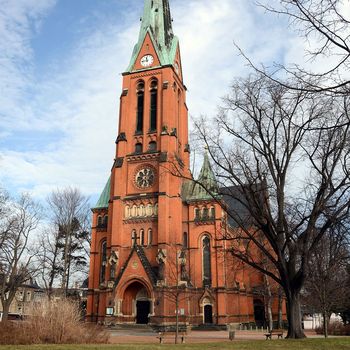
Maria and Martha Church
August-Bebel-Platz
The church building, also known as the “red church”, is the largest evangelical (protestant) church in the City of Bautzen. Once located in the Steinstraße, the church was moved to the present location as part of the eastward expansion of the town at the end of the 19th century. The inauguration of the Maria-and-Martha-Church, built by the Dresden architect Christian Schramm in neo-gothic style, was celebrated on the first Advent in 1891.
